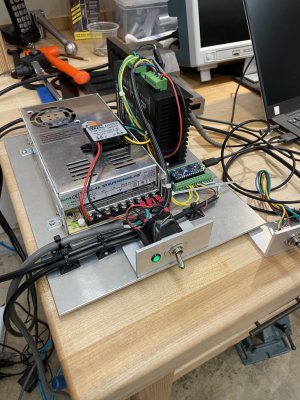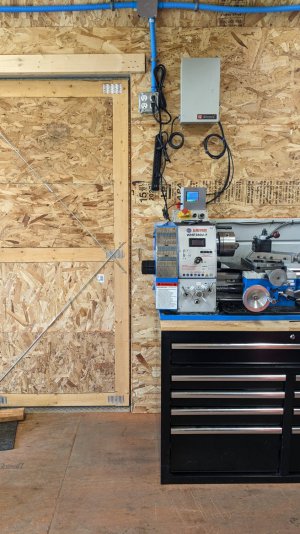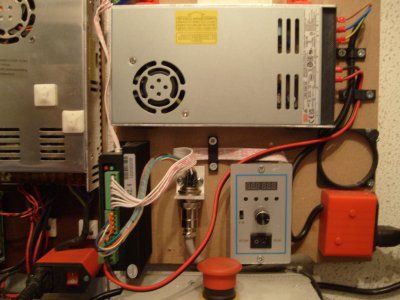- Joined
- Jan 25, 2022
- Messages
- 110
I installed a stepper motor on the Z-axis of my mill (PM728), and finally got the code sorted out.
Next: optimize (minimize) packaging of the controls. Initial config in the photo. The driver is a DM860I, which sticks up there like a sore thumb, but I need its voltage/current ratings for the motor and it only mounts vertically like that.
Cooling isn't really an issue, as this is very intermittent duty (I took the fan out of the PS because of noise).
The PS can be mounted on edge, making narrower but still tall arrangement. Maybe the only real option?
Ideas, comments ??
thanks

Next: optimize (minimize) packaging of the controls. Initial config in the photo. The driver is a DM860I, which sticks up there like a sore thumb, but I need its voltage/current ratings for the motor and it only mounts vertically like that.
Cooling isn't really an issue, as this is very intermittent duty (I took the fan out of the PS because of noise).
The PS can be mounted on edge, making narrower but still tall arrangement. Maybe the only real option?
Ideas, comments ??
thanks




